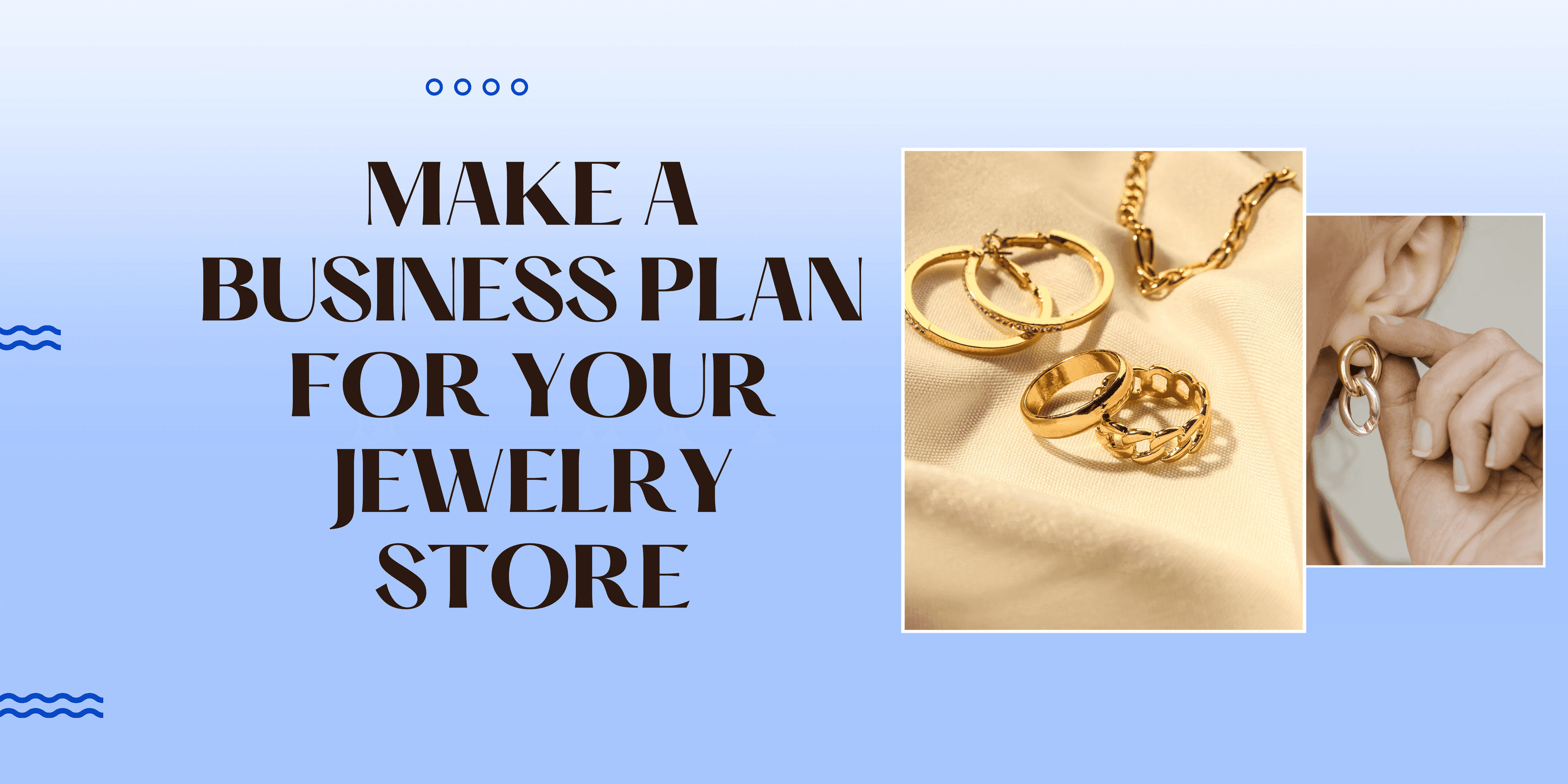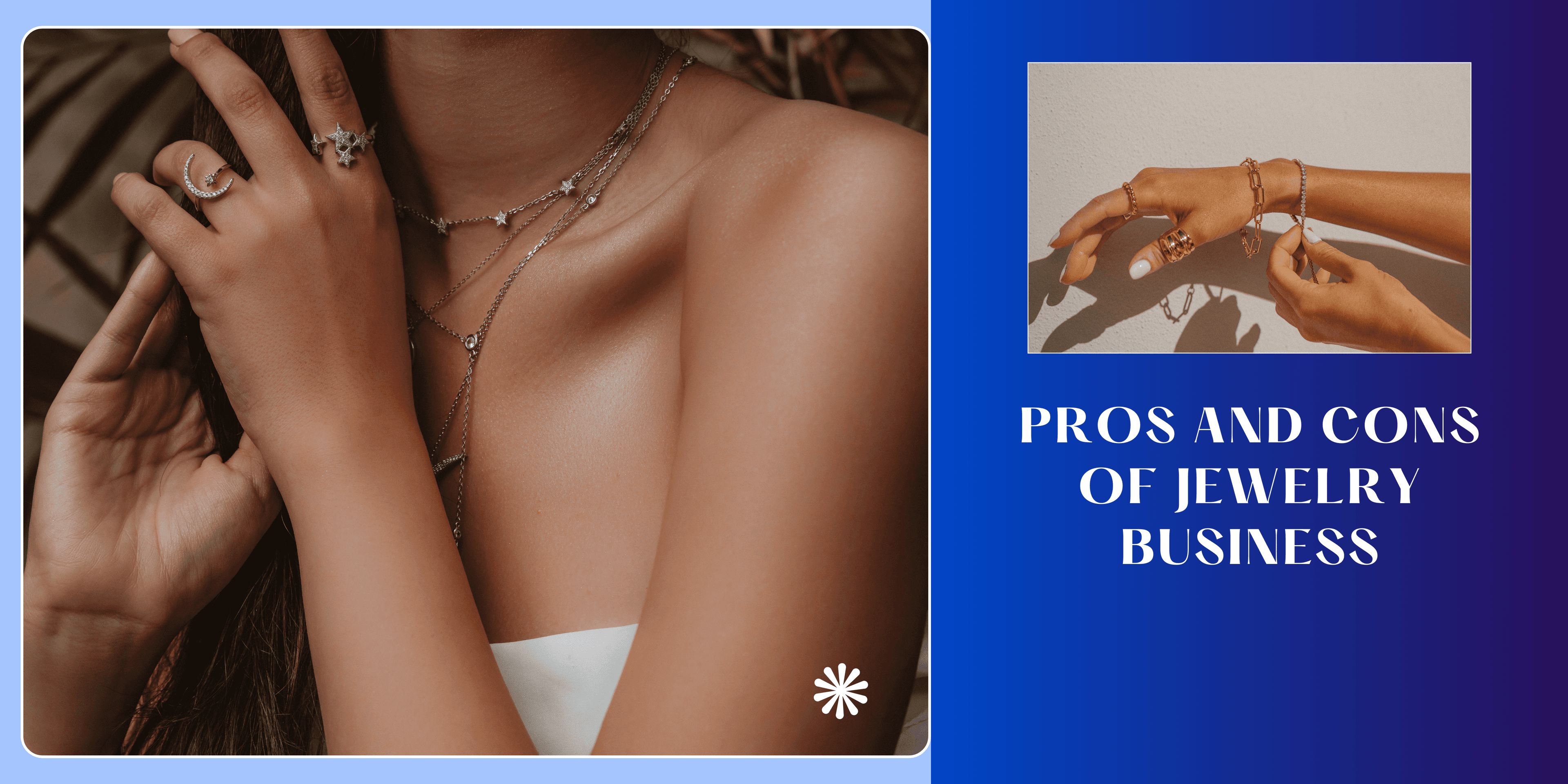
In the world of jewelry, turning your dream into a successful business requires more than just an idea and a creative brain: it demands a well-structured plan. Whether you're an aspiring entrepreneur, a small business owner, or someone looking to formalize your ideas, this guide will walk you through how to create a convincing jewelry business plan. By the end of this article, you'll have a clear roadmap to launch and grow your jewelry business with confidence.
Defining Your Brand's Vision
Before getting into the intricate details of your jewelry business plan, you must first define your brand's vision. This vision will serve as the foundation for all your future decisions and strategies. Ask yourself:
• What do I want my jewelry brand to be known for?
• What impact do I want to make in the industry?
• What values do I want my brand to embody?
Consider the type of jewelry you want to focus on, whether it be fine jewelry, fashion pieces, or more artsy designs. Each category is its own niche and has its own unique market, challenges, and opportunities. Your vision should align with your creative idea and also fit into one of the market’s gaps. Whatever your vision is, make sure to make it clear and compelling.
Key Elements of a Compelling Business Plan
A well-structured jewelry business plan will serve as your roadmap to success. It should include these essential components:
Executive Summary: this is a brief overview of your business concept and goals.
Company Description: your business plan needs to include detailed information about your company’s set up, including its legal structure.
Market Research: this section is an analysis of the jewelry industry in general, as well as research on your specific niche market.
Product Line: you will need to include a description of the jewelry products you are planning to sell and what makes them unique.
Marketing Strategy: your business plan needs to include plans for promoting your brand and reaching customers.
Financial Plan: this section needs to include detailed financial projections, budgets, and funding requirements.
Each of these elements works together to create a comprehensive plan that will guide your decisions and help you secure funding if needed.
Jewelry Market Assessment
Before launching your jewelry business, it is crucial to conduct thorough market research. This will help you understand the current state of the industry, identify opportunities, and anticipate upcoming challenges.
Start by analyzing your competition. Look at your direct and indirect competitors: large jewelry retailers, small jewelry shops, independent designers. What are they offering? What is their market positioning? What can you learn from their successes and failures?
You also need to assess the demand for different types of jewelry, to figure out what the customers will want and ask for. Tools like Google Trends, industry reports, and market research databases can provide valuable insights. Don't forget to leverage social media platforms to gauge costumer interests and trends.
Analyzing Current Market Trends
Staying aware of the latest trends in the jewelry industry is crucial for your business's success. Trends evolve quickly so staying aware requires constant reviewing and researching. These can include consumer preferences, emerging styles and technological advancements. But even though trends are important, you need to remember that trends can shape your brand's direction, but they shouldn't dictate it entirely. Your brand’s essence should come from your creative vision first and foremost.
For example, some relevant trends today include offering repair services and having multiple stores. This is because it has become easier to do so with cloud-based jewelry software solutions like CaratIQ. Such software tools can help you stay organized as you navigate the evolving jewelry market.
Identifying Your Niche in the Jewelry Industry
Finding your niche is crucial for standing out in the crowded jewelry market. This means identifying a specific area within the jewelry market where your brand can thrive. The jewelry industry is diverse, competitive and crowded, so finding your niche will help you market your jewelry in the most effective way.
When choosing your niche, consider your skills, interests, and market demands. This will help you define whether your niche is fine jewelry, or fashion jewelry or artist-designed jewelry. Jewelry businesses can either resell pieces from various designers, sell their own custom pieces, or mix both approaches.
Custom jewelry tends to bring in higher margins and fosters a loyal customer base, but this approach can be costly, requiring skilled jewelers and effective store management. Jewelry softwares, like CaratIQ, simplify the process.
On the other hand, vendor-sourced jewelry allows for higher volume sales but at a lower price, presenting its own set of challenges. Each model has its pros and cons, so choose the one that aligns best with your vision and resources.
Building Your Brand Identity
Your brand identity is how you want customers to perceive your jewelry business. It encompasses your brand's personality, values, and the emotional impact you want to create.
Think about known jewelry brands and ask yourself what are the first adjectives that come to mind when thinking about these brands. Then ask yourself what do you want your brand to evoke? Your brand identity will give the general vibe for your jewelry business, and is what customers will identify and resonate with. This is how your brand will stand out in its niche!
Choosing a Memorable Name and Logo
Your business name and logo are the first things potential customers will see. They play an essential role in attracting customers. When choosing a name, there are a few things to think about: you need to make sure it is unique and memorable and it reflects your brand's personality. You also need to consider how it can be marketed and how your brand visuals will look. Lastly, you need to check for domain availability and trademark conflicts.
For your logo, aim for a design that's simple yet distinctive. It should match your brand’s essence and style, and work well with the identity you’re trying to build. Make sure to also think about how it will look across various mediums, from your jewelry tags to your website header.
Defining Your Brand's Unique Value Proposition
Your Unique Value Proposition (UVP) is what sets you apart from competitors. It is important to identify it so you can use your UVP to position yourself on the jewelry market.
Different criteria should be factored in when thinking about what your UVP is. What makes you unique can be innovative designs, the use of rare or ethically sourced materials, varied customization options, an exceptional customer service, or even a unique shopping experience. It can also be multiple things, but you want to select a couple criteria maximum, so you can clearly communicate your UVP to your customers.
If you position yourself on too many things, it will become confusing for the customer. And whatever your UVP is, you want to make sure it's clear, compelling, and consistently communicated. Your UVP is the heart of your brand’s marketing and messaging. It represents the promise you make to your customers, why they should choose your jewelry over your competitors. It needs to be conveyed in all your marketing (website, emails, social media etc) and be presented in a way that will resonate with your target customer.
Product Line Creation
It is essential to developing a jewelry product line that reflects the brand’s vision and meets market demand. You must ensure you create a cohesive product line that tells your brand’s story.
Designing Your Signature Collection
If you're a vendor, the pieces you sell will reflect your brand. If you’re creating your own custom jewelry, then designing a signature collection is crucial. This will be the foundation of your brand.
Your signature collection should be the embodiment of your brand and should appeal to your target audience. Therefore, to create your signature collection, you need to really try and showcase your creativity all while representing your brand’s style and answering the needs of your target audience. If your brand style is timeless chic and your audience is looking for classic items, then your signature collection should consist of elegant timeless pieces.
While listening to your creative brain, don’t forget to think about the production costs of your collection and ensuring you create an innovative, quality collection with consistency between the pieces.
Determining Product Pricing and Sourcing Materials
To stay relevant in the market and make a profit, you need to price your jewelry just right. Pricing requires balancing profitability with market expectations.
When pricing your pieces, you should consider material costs, labor/overhead expenses, the perceived value of your brand and the pricing of similar items by competitors. These should give you the right indicators to price your pieces appropriately.
For sourcing, keep in mind that your business needs to build relationships with reliable suppliers who can provide high-quality materials consistently. This will ensure your supply needs are always met in a timely manner, with high quality materials and at proper cost, which has a direct affect on pricing.
Consider using software like CaratIQ to keep track of vendors and manage your inventory efficiently, so you always stay on top of your needs.
Target Audience and Customer Persona
Understanding your ideal customer is crucial for tailoring your products and marketing efforts effectively. When defining your business plan, it is essential to define your ideal customer: who is this jewelry for? Who will buy it and why? How does it appeal to that demographic specifically? All these questions should be answered, so you can draft up your ideal customer in terms of age, financial means, shopping habits, trend preferences etc.
Understanding Your Ideal Customer
To create your detailed customer persona, you need to consider a range of factors:
• Demographics: this means their age, gender, income level, location.
• Psychographics: this pertains to their lifestyle and interests: what do they like to spend money on and why?
• Buying habits: do they shop online or in-store? What is their price sensitivity?
• Jewelry preferences: what are their styles, the materials they shop for, on what occasions do they buy jewelry?
An example of a customer persona for a high-end brand could be: young woman in her 30s, who works as a corporate executive, has a high-income level, and values quality and uniqueness in her jewelry choices.
Tailoring Marketing to Your Audience
Once you understand your audience, you can tailor your marketing strategies accordingly. This means choosing the right platforms: print, emailing, social media platforms. It also means crafting messages that resonate with your audience's desires so the customer feels interested by the brand and the items. You also need to select influencers or partners that align with your brand values.
Financial Roadmap
A clear financial roadmap is essential for your jewelry business plan. This means setting realistic financial goals and forecasting your sales vs. your expenses.
Setting Realistic Financial Goals
You need to set both short-term and long-term financial goals, as your business needs and income will evolve depending on the time-frame. These might include:
• Monthly or quarterly sales targets
• Profit margins
• Growth rate projections
Be realistic based on your market research and initial sales data. Make sure to regularly review and adjust these goals as your business evolves and expands, so your data remains accurate and up-to-date.
Forecasting Sales and Budgeting for Expenses
You need to estimate potential sales based on market trends and your capacity. Don’t forget to consider seasonal fluctuations, they are very common in the jewelry industry and will affect your sales (Holidays, Mother’s Day, Valentine’s Day, engagement season…).
Make sure to budget for expenses like materials and production costs, marketing, overhead and operational costs and staff-related costs. Tools like CaratIQ can help you track expenses and manage your budget effectively, making forecasting and budgeting easier for you.
Marketing and Sales Strategies
A strong marketing strategy is crucial for attracting customers and driving sales.
Crafting an Effective Online Presence
In today's digital age, your online presence is often your first point of contact with potential customers. Having a well-crafted online presence comes from:
• Creating a user-friendly, visually appealing website
• Optimizing for search engines (SEO) to improve visibility and bring new customers to your website
• Leveraging social media platforms to showcase your jewelry and engage with customers
Consider using CaratIQ's free e-commerce website feature to streamline your online sales process.
Developing Sales Channels and Partnerships
In order to reach a wider audience, you need to diversify your sales channels. This means focusing on your e-commerce website but also third-party online marketplaces like Etsy or Shopify. This might also mean having a retail store presence and building partnerships with boutiques or department stores, or organizing pop-up shops or trunk shows with partners.
Building partnerships with influencers, fashion bloggers, or complementary brands can also help expand your reach at a lower cost.
Operations and Management
Efficient operations are key to running a successful jewelry business. In your day-to-day operations, you will have to manage production, supply chain demands and daily operations. Streamlining these operations will help you improve efficiency and profitability, so don’t hesitate to rely on software like CaratIQ to do so.
Legal Considerations and Compliance
Ensuring you're compliant with all legal requirements is essential to start your business. You cannot launch a business if you do not follow related regulations, including:
• Business registration and licenses
• Tax obligations
• Industry-specific regulations (e.g., precious metal hallmarking)
Consult with a lawyer or business advisor to ensure you are covering all bases, and make sure to keep aware and up to date on all regulatory changes, as the regulations landscape can change quickly.
Navigating Jewelry Business Regulations
Stay informed about all regulations that are specific to the jewelry industry, such as:
• Ethical sourcing requirements (e.g., Kimberley Process for diamonds)
• Accurate metal and gemstone descriptions
• Safety standards for wearable items
Adhering to these regulations not only keeps you legally compliant but also builds trust with your customers. They will be looking for this information so you need to ensure you provide it for them. If the customer feels like you’re hiding something, they will go see a competitor.
Protecting Your Designs and Intellectual Property
If you're creating original designs yourself, you want to make sure you protect your intellectual property. To do so, you must make sure to register trademarks for your brand name and logo and consider getting design patents for unique jewelry pieces. This will prevent the unauthorized use of your designs. You also might want to use copyright protection for marketing materials and product images.
Monitoring Performance and Iterating
Regularly assessing your business performance is essential to guide you and your decision-making. Make sure to use key performance indicators (KPIs) to stay updated on your performance, such as your sales revenue and profit margins, your website traffic and conversion rates and your social media engagement.
CaratIQ's reporting features can track these metrics efficiently for you, so you can always be aware of your performance and iterate on your strategies based on this data.
Advice for Writing a Jewelry Business Plan
To conclude, as you craft your jewelry business plan, you must:
Be thorough in your research and realistic in your projections.
Clearly articulate your unique vision and value proposition.
Stay flexible and aware, and be prepared to adapt to market changes.
Use tools like CaratIQ to streamline operations and track performance.
Remember, your business plan is a living document. Review and update it regularly as your jewelry business grows and evolves. With this comprehensive guide, you're now equipped to create a robust business plan for your jewelry business. Trust in your vision, stay informed about industry trends, and be prepared to ride the wave!
Read Also:
How Much Does it Cost to Start a Jewelry Business

You may also like
View all

